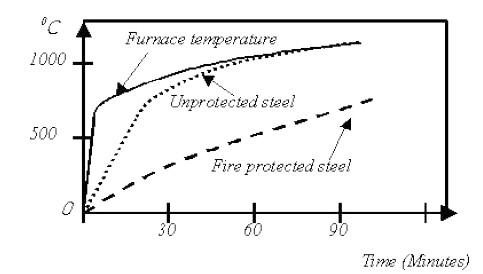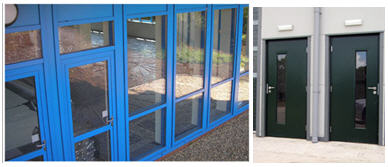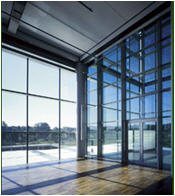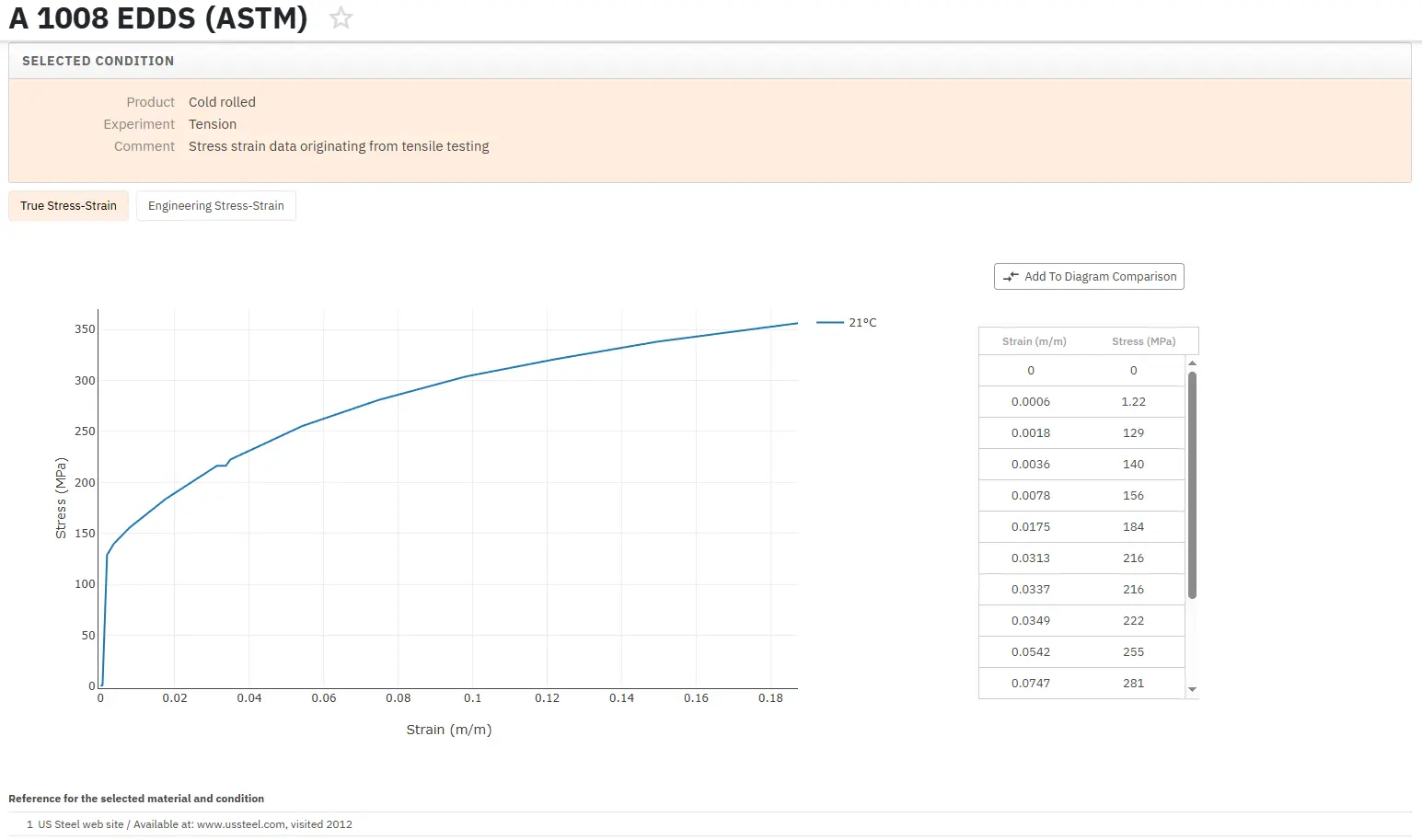Fire-Resistant Steels: Part One
Abstract
This article examines the behavior of steel structures under fire conditions and the development of fire-resistant steels as a solution to structural vulnerability at high temperatures. Conventional steel significantly loses yield strength when exposed to elevated temperatures, creating safety risks in building fires. Fire-resistant steels, developed through research in the USA, Japan, Korea, and other countries, maintain at least two-thirds of their room-temperature yield strength at 600°C. These specialized steels, typically incorporating niobium, molybdenum, and other alloying elements, provide enhanced fire protection while reducing the need for costly external fire protection measures. The article explores the microstructural characteristics, performance benefits, and practical applications of these innovative materials in modern construction.
Understanding Steel Behavior Under Fire Conditions
Steel structural properties and its yield strength considerably decrease as it absorbs heat upon exposure to a high temperature level. The main purpose of building fire safety is to reduce the risk of both life and property losses by using effective design and construction measures. Although the probability of fire damage cannot be completely eliminated, building fire safety can be attained at an acceptable minimized risk level by using some proper design features.
Fire is a chemical phenomenon occurring as a result of thermal processes. Concerning the steel members exposed to a fire threat, the level of temperature increment on the steel profile depends on thermal inertia, exposed surface area (section factor), and the protective coating. As the rate and amount of heat flow from the fire environment to steel members increase, the temperature, and thus the risk of failure for the structural member, will also increase.
Since steel has very high thermal conductivity, exposed member surfaces easily transmit conveyed heat flow from the fire source to the whole structure in a short period of time. It is also a well-known fact that heat is transmitted between elements having different temperatures. Heat is a form of thermal energy transmitted over the material surface, from high temperature to low temperature mediums, by way of conduction, radiation, or convection modes.
Design Considerations for Fire Safety in Steel Structures
Designing a building to ensure a determined level of fire safety is a comprehensive issue requiring the consideration of several related factors, such as the building type, the area and height of the building, located fire exits, the number of occupants, and the quantity and type of combustible materials (potential fire load) expected to be present in the building. It is also very important to consider the fire spread between attached buildings or building parts which can be used for different purposes.
As mentioned previously, a steel building's structural members are expected to have fire resistance to prevent any structural failure for a determined period of time, as stated by the related fire codes, to give the building occupants more time to escape and allow the fire service to control it. The required fire resistance periods for the different steel building types can be easily found in country-specific building codes.
On the other hand, it must be kept in mind that steel building members may easily collapse during a fire if the temperature is allowed to reach a critical value. The fire resistance of a steel member is related to some important factors including the section size, the perimeter of the section exposed to fire, place of the member in the protective structural assembly, and the steel material thickness. Depending upon structural assembly and the fire occurrence, even the exposed steel may resist fire up to 30 minutes.
However, the structural steel needs to be protected against fire using the proper insulating materials and methods to control the situation and resist for longer periods. In essence, the structure's fire safety is measured by the time of resistance regarding the supplied evacuation time and the level of failure. It is also important to assure that the fire resistance time is sufficient such that the structure is able to carry the building loads during the duration of the fire.

Figure 1: The rate of heating of structural steel work, comparing protected and unprotected steel in laboratory fire conditions.
Development of Fire-Resistant Steels
In order to enhance the fire-resistance of steel-frame building structures, a significant amount of research has been carried out in the USA, Japan, Korea, and other countries, and several fire-resistant steels with different strength levels have been developed. These steels represent a notable improvement over conventional steels in terms of elevated temperature yield strength. The yield strength of the fire resistant steels at 600ºC was set at the minimum of two-thirds of the specified room-temperature yield strength while maintaining low yield ratio, good weldability, and other properties.
The early literature suggests that an attractive approach to production of structural steels involves the use of niobium and molybdenum additions to increase the elevated temperature strength by stabilizing the microstructure at elevated temperature through solute and precipitation effects, and by dispersion strengthening via fine alloy carbide precipitates containing Nb and Mo. Other elements such as W, V, Cr, Ti, etc., are also relevant to heat-resistant steels.
A recent investigation following the Nb/Mo approach suggested a contribution from the base microstructure of the ferrite, associated with alloying effects on the austenite transformation behavior during cooling. In particular, an acicular ferrite or bainite microstructure is suggested to enhance strength-retention at temperatures up to about 700°C, primarily because of finer and more closely spaced alloy carbides resulting from an increased number of nucleation sites associated with the high dislocation density of the bainite.
A matrix of steels was designed to examine these effects more closely, by testing the response to a simulated fire of a C-Mn steel processed to have different starting microstructures (martensite, bainite, or equiaxed ferrite+pearlite), as well as a Nb modified steel with different starting microstructures (bainite or equiaxed ferrite+pearlite).
In the Nb-microalloyed steels, the Nb precipitation potential was also modified by thermal treatment, in an effort to compare the influence of different precipitate dispersions in each microstructure type. The "state" of precipitation, either in solution, peak-aged, or overaged has been shown to influence fire-resistant properties in Cu-containing steels. While molybdenum is reported to be a useful addition for this application, the niobium-only approach may be more cost effective for high volume structural applications, and was selected for initial investigation, to examine the Nb effects more closely in the absence of interactions with Mo.
Applications of Fire-Resistant Steels in Modern Construction
In Japan, the building regulations do not allow for the conventional steelwork temperatures to exceed 350°C because the conventional carbon steel reduces its 0.2% proof stress at 350°C to 2/3 of its specified values at ambient temperature. This requirement generally leads to massive amounts of fire protection which is very costly.
Compared to carbon steels, fire resistant (FR) steels have higher yield strength at elevated temperatures. Japanese Industrial Standard specifies that the 0.2% proof stress of FR steels at 600°C must retain at least 2/3 of the value at ambient temperature, that is, a value of 217 N/mm² for Grade SM490A steel with a yield strength of 325 N/mm² and a tensile strength of 490 – 610 N/mm². In other aspects, at ambient temperature, FR steels have the performance and weldability similar to carbon steels. Basically, FR steels have similar chemical composition to carbon steels of same strength grade, but have additions of chromium, molybdenum and other alloying elements to improve the yield point at high temperatures.
In Japan, the FR steels have been widely used in building construction including multi-storey open car parks, sport facilities, atriums, railway stations, external steel frames and many other structures. The use of FR steels successfully reduces the amount of fire protection and the structural members may even be unprotected in cases where the steel temperature would not exceed 600°C.


Figure 2: Examples of the applications of fire resistant steels
Read more
Access Precise Properties of Structural Steels Now!
Total Materia Horizon contains property information for 150,000+ structural steels: composition, mechanical and physical properties, nonlinear properties and much more.

Get a FREE test account at Total Materia Horizon and join a community of over 500,000 users from more than 120 countries.